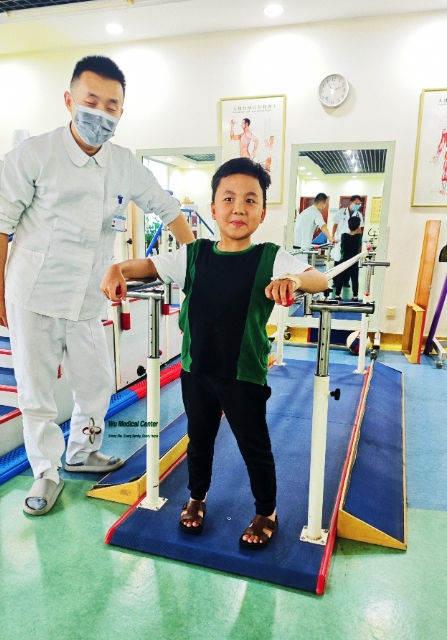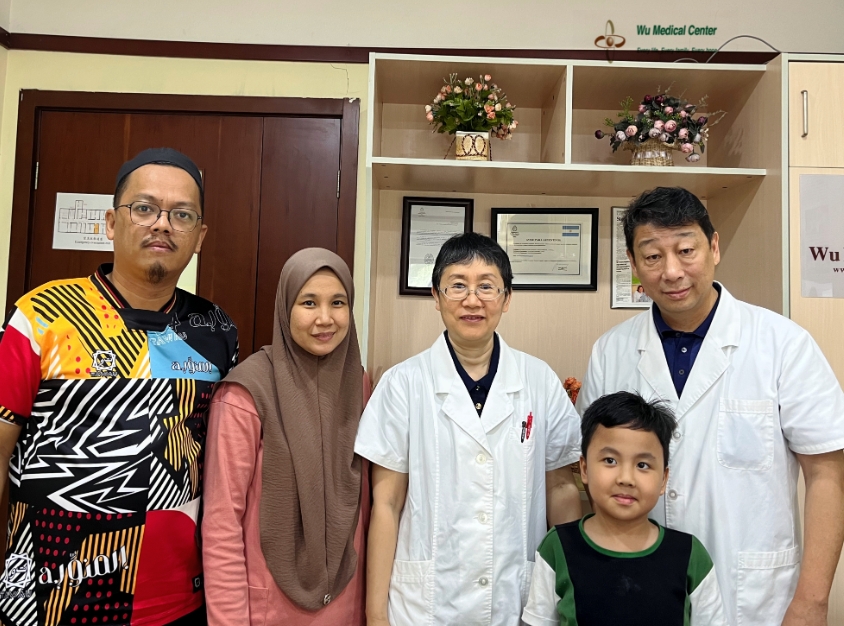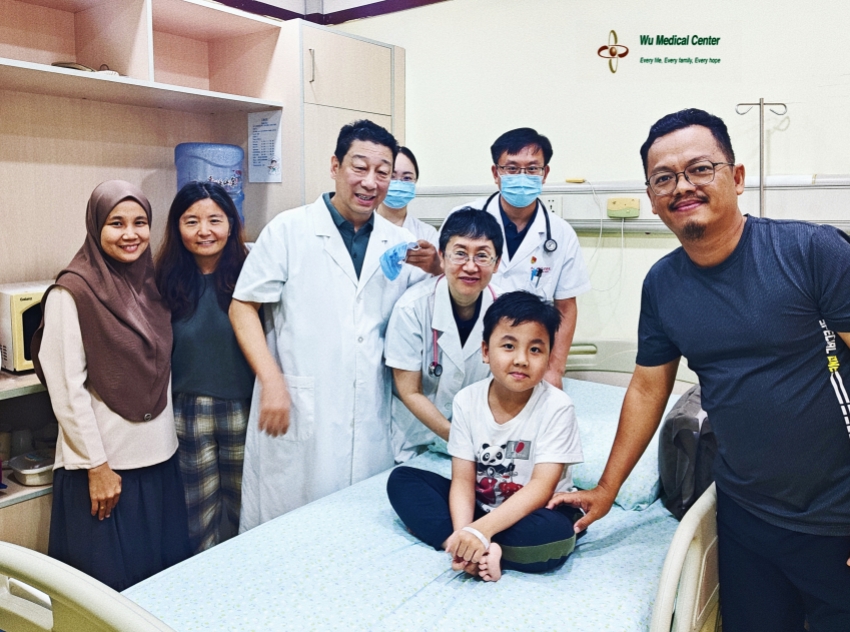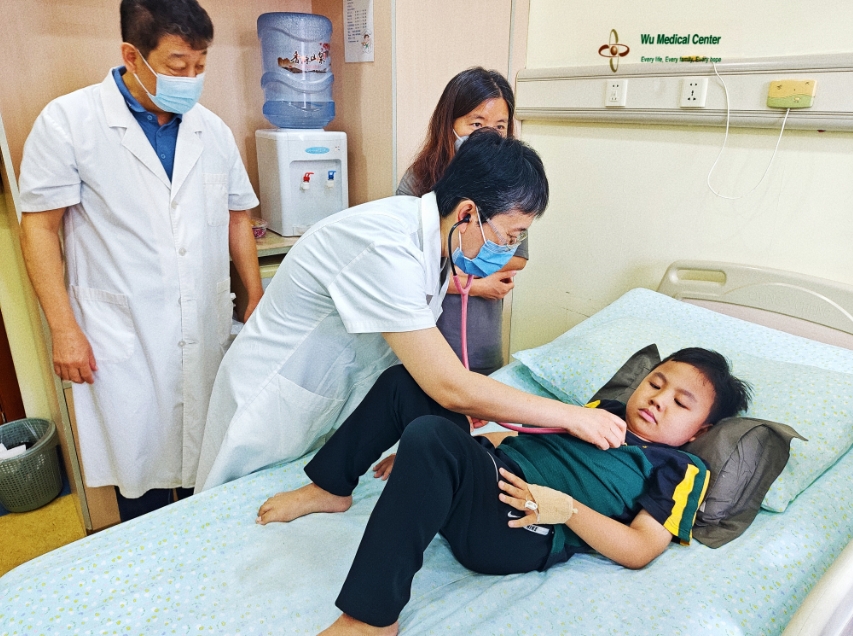Heelal Mikail Binabd Hasman-Duchenne muscular dystrophy-(Malaysian)
 Patient Name: Heelal Mikail Binabd Hasman
Patient Name: Heelal Mikail Binabd Hasman
Gender: Male
Age: 8 years old
Nationality: Malaysian
Diagnosis: Duchenne muscular dystrophy
Pre-treatment:
The patient is an 8-year-old boy with progressive muscular weakness. He had a prominent abdomen when standing, and was in a passive standing position. He could not turn over by himself, could not sit up from a supine position, could not stand up from a seated position, could not stand unassisted, and had significant difficulty walking. He could not walk independently, but could walk with assistance, with a swaying gait and a noticeable increase in stride width. He experienced tachycardia with minimal activity. He had no sensory abnormalities and no bowel or bladder dysfunction.
Admission Examination:
Patient's blood pressure was 105/59 mmHg. His resting heart rate was 85-95 beats per minute, and it increased to 120 beats per minute with activity. His fingertip oxygen saturation was 98%. His skin was without jaundice or bleeding points, and the pharynx was without congestion. His respiratory sounds were clear in both lungs with no dry or moist rales. His heartbeat was strong and the rhythm was significantly irregular. His abdomen was flat and soft, and his liver and spleen were not palpable.
Neurological Examination:
The patient is clear headed and speaks fluently. His memory and calculation abilities are normal. There are no abnormalities in his cranial nerve examination. His neck flexion and shoulder elevation muscle strength was grade 3. His upper limb muscle strength was grade 3 in both hands, and his grip strength was grade 3. His lower limb muscle strength was grade 2+ bilaterally. There were visible pseudoatrophy in the calf muscles of both legs. His muscle tone in all four limbs is generally normal. His tendon reflexes in all four limbs were significantly reduced. There are no pathological signs present. His limb sensation is normal. His finger-nose test is steady and accurate, and his rapid alternating test is flexible. Due to muscle weakness, he could not complete the bilateral heel-knee-thigh test. His postural reflex was negative when standing alone with his eyes closed, and he could not perform the single-leg standing test. His meningeal irritation sign is negative.
Treatment Process:
The patient was admitted with a clear diagnosis of "Duchenne Muscular Dystrophy". He was given CAST therapy and two types of stem cell treatment, mesenchymal stem cells + neural stem cells, for combined treatment to repair muscle fibers, nourish muscle tissue, improve circulation, regulate immunity, and provide comprehensive rehabilitation training.
After treatment:
The patient's motor function has significantly improved, and he can now independently perform movements such as turning over, standing up from a lower sitting position, and sitting up from a supine position. His motor speed and flexibility have significantly improved. His upper limb muscle strength and hand grip have increased to grade 4+, and his waist, abdomen, and back strength have improved. His posture when standing has significantly corrected with a forward protrusion of the abdomen, and he can now support himself in a kneeling position and complete multiple arching movements. His lower limb muscle strength has increased to grade 4, and he can maintain standing for over 10 seconds with one leg. His limb movement stability has significantly improved, and his walking function has significantly improved, allowing him to walk independently with a significantly improved gait, improved step base, and significantly faster walking speed. His walking distance has also significantly increased. His cardiac function has improved, with a reduction in arrhythmia and a heart rate of approximately 85-90 beats per minute after exercise. His energy, physical stamina, and exercise endurance have all significantly improved.




